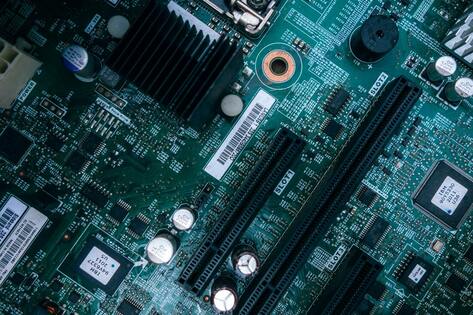T-DAR Maintenance
Recommendations
|
To ensure the maximum life span and effectiveness of the T-DAR system, a maintenance procedure should be established. The solid state T-DAR system so does not require the more extensive maintenance that a mechanical system requires. Performing the following checks at the prescribed times will enable the system to continue providing secure access control. A system that is properly calibrated and maintained will give few false alarms.
|
During System Install
CONTROL UNIT CABINET
The T-DAR control box is an industrial computer with very sensitive micro-chips and electrical components.
WARNING: Modifying, drilling or cutting holes into the T-DAR controller cabinet will void the one year manufacturer's warranty.
Cutting or drilling of the metal enclosure inevitably results in metal chips and particles falling into the control box and lodging in the sensitive electrical components of the internal circuit boards. Additionally, the level of vibration caused by drilling/cutting of the enclosure is not included into our factory test procedure. Normal transportation and standard installation is well within our design specification.
At installation and following any sub-sequence additions or alterations to the area around the control box.
VENTILATION Other than a ventilation fan, a T-DAR system has no moving parts. Fan units last for a number of years under continual use, provided that the environment is clean and that there are no obstructions to the airflow.
NOTE: Ensure that a six inch (15.2 cm) gap is maintained on both sides of the T-DAR control unit, away from any wall surface, equipment housing or conduit piping.
Every Six (6) Month
sCALIBRATION
To ensure optimal tailgate detection, compare the calibration appearing on the Installer Camera Setting user interface screen against the settings listed in the manual - Section 7: Configuration and Set Up...
NOTE: T-DAR calibration should be checked immediately after any change is introduced into a mantrap or vestibule environment.
Calibrate the T-DAR system after a change in the following:
CALIBRATION
To ensure optimal tailgate detection, compare the calibration appearing on the Installer Camera Setting user interface screen against the settings listed in the manual - Section 7: Configuration and Set Up...
NOTE: T-DAR calibration should be checked immediately after any change is introduced into a mantrap or vestibule environment.
Calibrate the T-DAR system after a change in the following:
STEREO CAMERAS
There are two cameras in each stereo head. In order for T-DAR stereo algorithms to work correctly, the raw video from the cameras must be clean and stable:
NOTE: On T-DAR systems utilizing more than one stereo head, sync interference on one camera will often induce poor sync performance on other camera heads.
HARDWARE AND INTEGRATION
Check the operation of the mantrap once a year to ensure that all systems are functional:
NOTE: To ensure the maximum continuation of protection by the system, security planners should consider purchasing a spare
T-DAR control unit to minimize the amount of down time in the rare event of an equipment outage.
CONTROL UNIT CABINET
The T-DAR control box is an industrial computer with very sensitive micro-chips and electrical components.
WARNING: Modifying, drilling or cutting holes into the T-DAR controller cabinet will void the one year manufacturer's warranty.
Cutting or drilling of the metal enclosure inevitably results in metal chips and particles falling into the control box and lodging in the sensitive electrical components of the internal circuit boards. Additionally, the level of vibration caused by drilling/cutting of the enclosure is not included into our factory test procedure. Normal transportation and standard installation is well within our design specification.
At installation and following any sub-sequence additions or alterations to the area around the control box.
VENTILATION Other than a ventilation fan, a T-DAR system has no moving parts. Fan units last for a number of years under continual use, provided that the environment is clean and that there are no obstructions to the airflow.
NOTE: Ensure that a six inch (15.2 cm) gap is maintained on both sides of the T-DAR control unit, away from any wall surface, equipment housing or conduit piping.
Every Six (6) Month
sCALIBRATION
To ensure optimal tailgate detection, compare the calibration appearing on the Installer Camera Setting user interface screen against the settings listed in the manual - Section 7: Configuration and Set Up...
NOTE: T-DAR calibration should be checked immediately after any change is introduced into a mantrap or vestibule environment.
Calibrate the T-DAR system after a change in the following:
- Lighting
- Wall surface
- Floor covering
- New or different signage or postings
- Ideal test subjects would be individuals of different height and/or body mass.
- Ensure that a user is able to pass completely through the mantrap on the first try.
- Attempt to tailgate through the mantrap.
- Each tailgate attempt should trigger a local alarm from the annunciator unit and send a remote signal to building security.
CALIBRATION
To ensure optimal tailgate detection, compare the calibration appearing on the Installer Camera Setting user interface screen against the settings listed in the manual - Section 7: Configuration and Set Up...
NOTE: T-DAR calibration should be checked immediately after any change is introduced into a mantrap or vestibule environment.
Calibrate the T-DAR system after a change in the following:
- Lighting
- Wall surface
- Floor covering
- New or different signage or postings
- Ideal test subjects would be individuals of different height and/or body mass.
- Ensure that a user is able to pass completely through the mantrap on the first try.
- Attempt to tailgate through the mantrap.
- Each tailgate attempt should trigger a local alarm from the annunciator unit and send a remote signal to building security.
STEREO CAMERAS
There are two cameras in each stereo head. In order for T-DAR stereo algorithms to work correctly, the raw video from the cameras must be clean and stable:
- Check the integrity of the camera connections at commissioning, ensuring that they are secure.
- Check the raw video output from both cameras in each stereo head on a video monitor (or VGA monitor).
- In a system with more than one head, check the video signals from all camera units.
- Ensure that the video sync from each camera is stable with no signs of movement.
- On the monitor output, look for signs of interference on both cameras to ensure that the video is clean with no lines, static, warping or vertical shifting.
- If one or both images shift up or down, by a pixel or more, check the CAT5 and coax cables running to the camera heads.
NOTE: On T-DAR systems utilizing more than one stereo head, sync interference on one camera will often induce poor sync performance on other camera heads.
HARDWARE AND INTEGRATION
Check the operation of the mantrap once a year to ensure that all systems are functional:
- Confirm the correct operation of door contacts and locks.
- Test all readers to ensure that users have no trouble receiving validation.
- Ensure that the alarm outputs are received by building security.
NOTE: To ensure the maximum continuation of protection by the system, security planners should consider purchasing a spare
T-DAR control unit to minimize the amount of down time in the rare event of an equipment outage.




